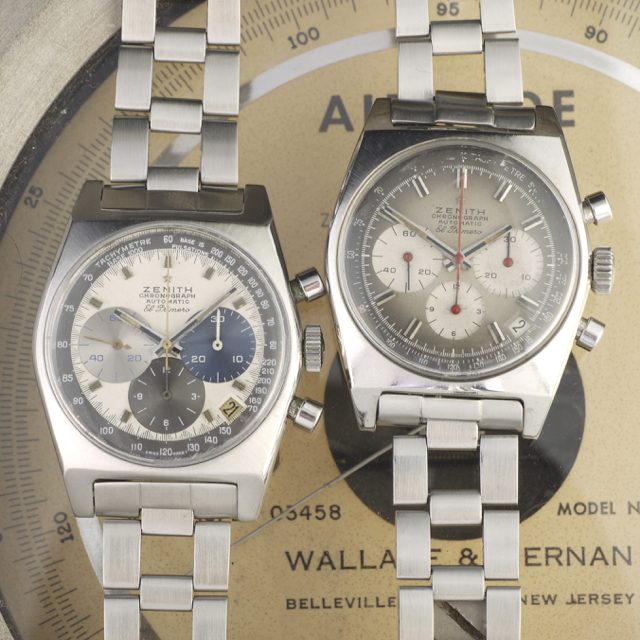
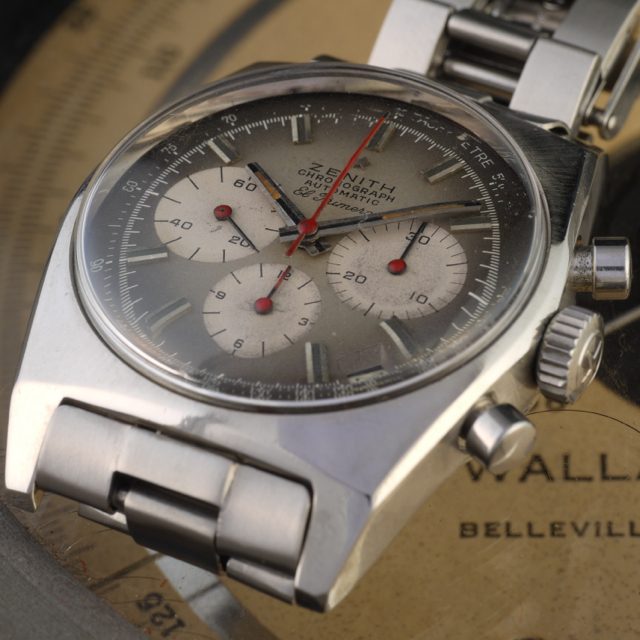
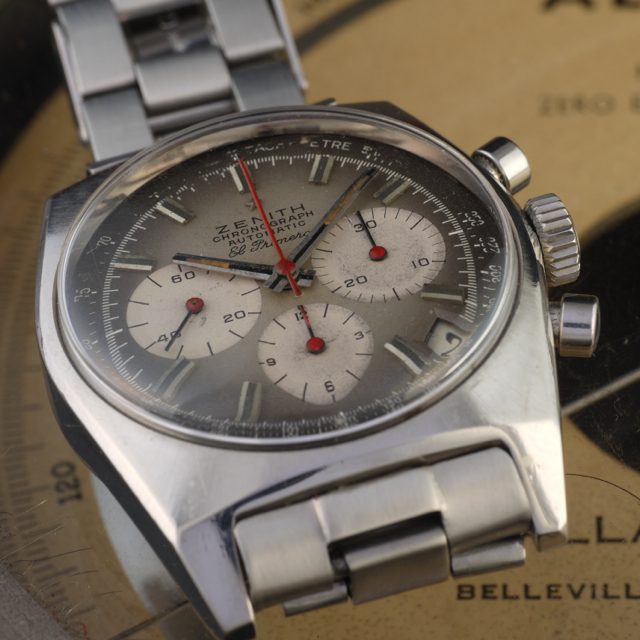
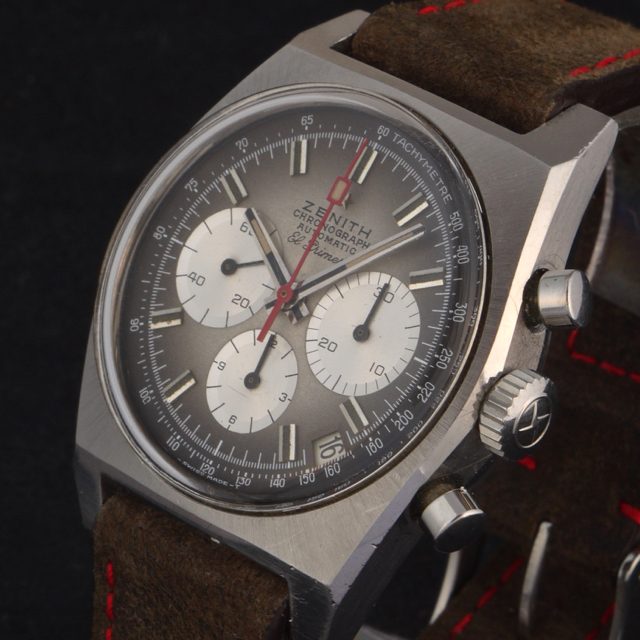
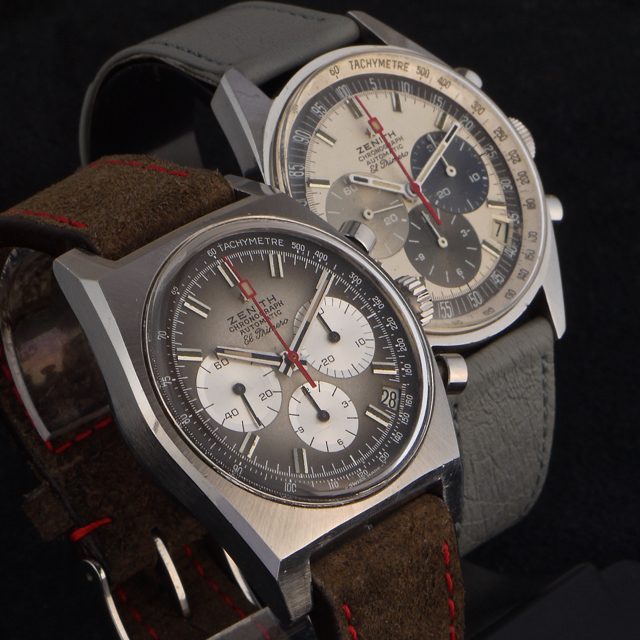
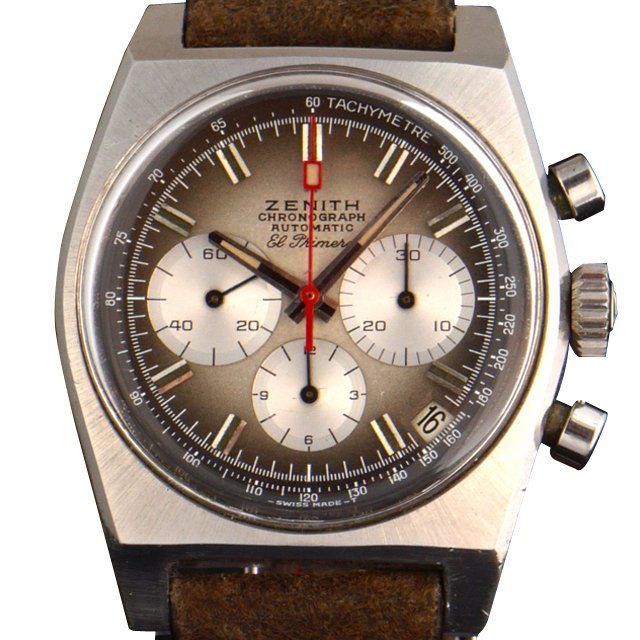
Zenith el Primero
Neil Armstrong and Buzz Aldrin become the first humans to walk on the Moon1969 Zenith el Primero ref. A385, 2500 made between 69-71.
It is possible that two slightly different dials were used for this model, with different shades of khaki and with silver or white sub-dials. There also exist different shades in the color due to aging of the dial.
In 1969 three automatic chronographs were introduced: the Zenith el Primero, the Seiko 6139, and the Caliber 11 (produced in partnership with Heuer, Hamilton/Buren, Dubois-Depraz and Breitling). To this day, it is disputed as to which of these brands launched first. In fact the Caliber 11 did go on sale before the el Primero.
The history of el Primero might have ended abruptly in 1975. That was when the Zenith Radio corporation, the American company that had owned the brand for the past four years, decided to stop making mechanical watches and to stick to quartz watches. The decision was irrevocable and the owner intended to negotiate a scrapyard price for all the machines, calibers and tools. The order was to be executed without delay and the metal along with a century of tradition to be sold by the ton to the highest bidder.
At the risk of losing his job, Charles Vermot simply could not face the thought of seeing his production equipment destroyed, and so he hid all essential tools and components. Just nine years later, the entire set of lost equipment was back in place. Without his courageous act, the brands very survival would have been in jeopardy.
In the early 1980s, a press alone cost over 40,000 francs and it takes over 150 of them to make an el Primero – meaning a total of 7 million Swiss francs. Zeniths financial, technical and human investments could thus have been swept aside in one stroke.
During its 41-year history the total of all el Primero movements ever made (including the hundreds of thousands found in the Rolex Daytona 16520) add up to only 600,000; by contrast over 1,000,000 Valjoux 7750 movements are made each year.
